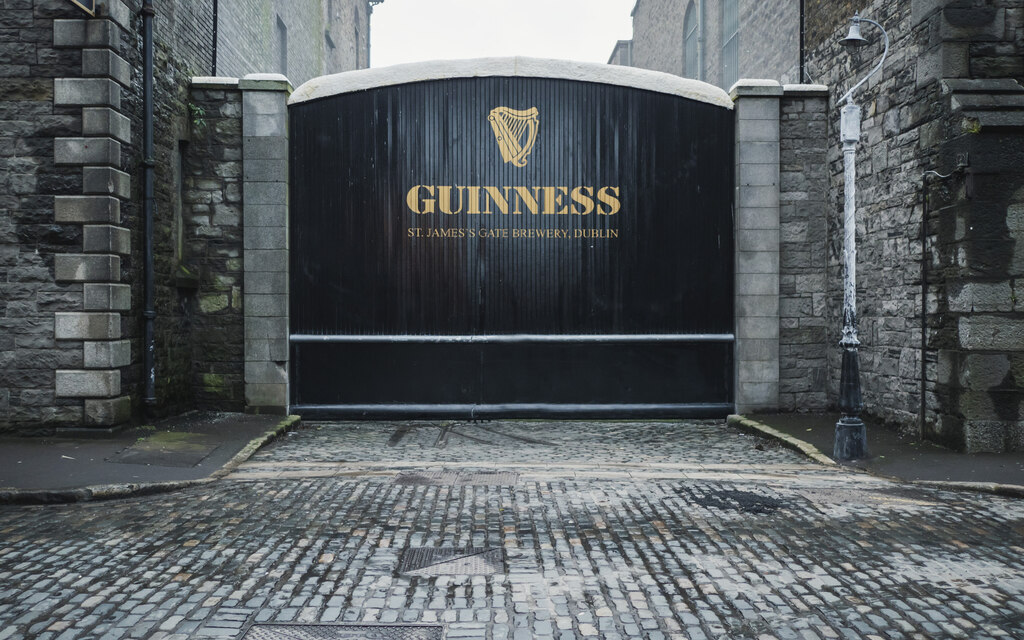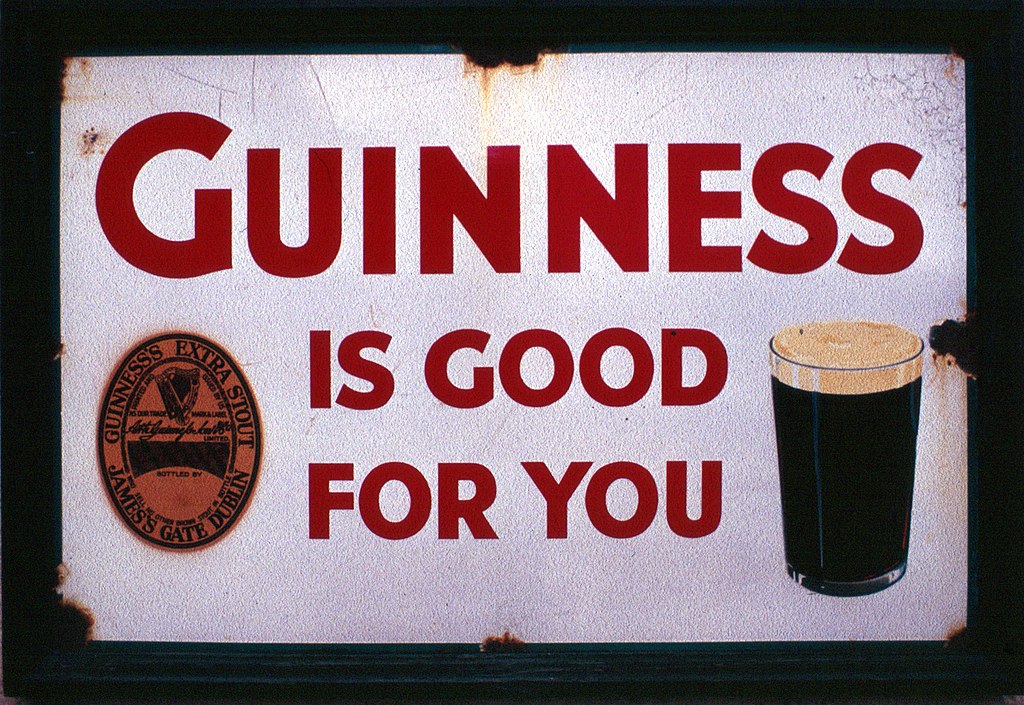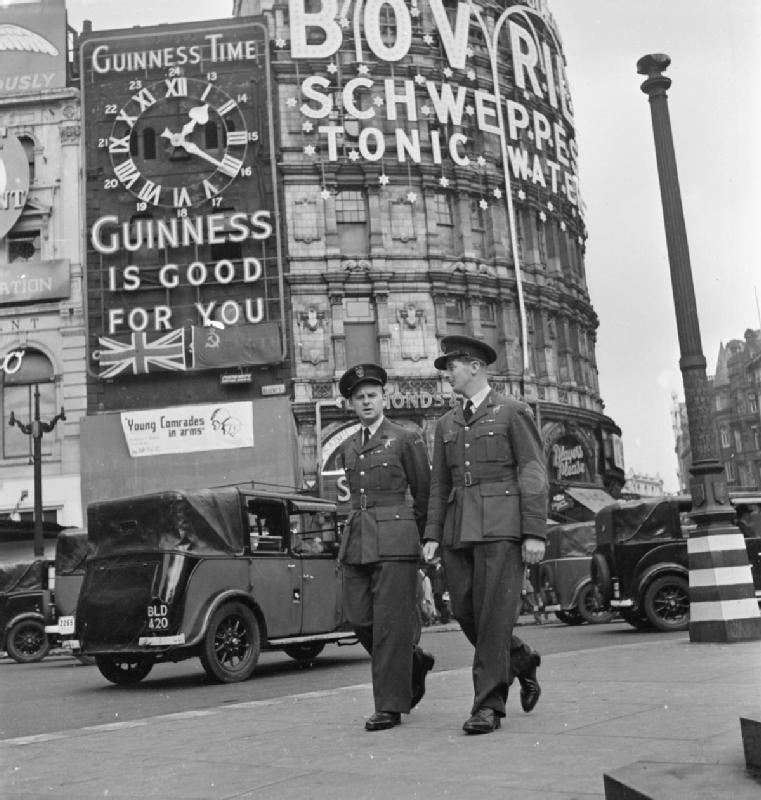For over 260 years, a dark ruby-red (though commonly perceived as black) liquid with a creamy white head has captivated drinkers worldwide, becoming not just a beverage but a cultural icon. Guinness, the world-renowned stout from Dublin, has transcended its humble beginnings to become one of the most recognisable drinks in the world. Its distinctive taste, iconic branding, and rich heritage have cemented its place in both drinking culture and marketing excellence. This article delves deep into the fascinating world of Guinness, exploring its storied past, unique brewing methods, cultural significance, and how it has adapted to remain relevant in the 21st century.
The storied history of St. James’s Gate brewery
The Guinness story begins with one man’s vision and an audacious business move. In 1759, Arthur Guinness took a remarkable leap of faith when he signed a 9,000-year lease at £45 per annum for an unused brewery at St. James’s Gate in Dublin, Ireland. This astounding commitment to the future would prove to be one of the most prescient business decisions in brewing history.

Initially, Arthur brewed ales, but in 1778, he began producing the dark beer porter that would eventually evolve into the stout we know today. The first Guinness beers to use the term “stout” were Single Stout and Double Stout, which appeared in the 1840s. Throughout much of its history, Guinness produced only three variations of a single beer type: porter or single stout, double or extra stout, and foreign stout for export.
The brewery’s growth was nothing short of phenomenal. It became the largest brewery in Ireland by 1838, and by 1886, it claimed the title of largest brewery in the world with an annual output of 1.2 million barrels. What’s particularly interesting about this meteoric rise is that it occurred despite the company’s refusal to advertise or discount its products. When Guinness became a public company in October 1886, it was valued at £6 million with shares being 20 times oversubscribed – shares rose to a 60 per cent premium on the first day of trading.
The Guinness family maintained control of the brewery until relatively recently in its long history. The company merged with Grand Metropolitan in 1997 to form Diageo plc, a multinational alcoholic drinks producer based in London. Although the brewery is now part of a larger corporate entity, the St. James’s Gate Brewery in Dublin remains the heart of Guinness production.
Innovation and quality control
Throughout its history, Guinness has been at the forefront of innovation in brewing. Arthur Guinness himself created the brand’s first major innovation in 1801 with West Indies Porter, a beer with high alcohol and hops content that could preserve itself during long journeys overseas.
The company pioneered several quality control efforts that would influence the wider brewing industry and science itself. In 1899, the brewery hired statistician William Sealy Gosset, who achieved lasting fame under the pseudonym “Student” for techniques developed at Guinness, particularly Student’s t-distribution and the famous Student’s t-test. These statistical methods are still used today in fields ranging from scientific research to quality control across numerous industries.
The distinctive brewing process
What makes Guinness stand apart from other beers begins with its ingredients and unique brewing process. Guinness’s flavour derives from malted barley and roasted unmalted barley; the latter being a relatively modern addition that became part of the grist in the mid-20th century. The roasted barley gives Guinness its characteristic dark colour and distinctive taste.
For many years, a portion of aged brew was blended with freshly brewed beer to give a sharp lactic acid flavour. Although Guinness still features a characteristic “tang,” the company has been secretive about whether this blending process still occurs in modern production methods.
Perhaps the most visually distinctive aspect of Guinness is its thick, creamy head, which comes from mixing the beer with nitrogen and carbon dioxide. This innovation dates back to 1959 when Guinness began using nitrogen, fundamentally changing the texture and flavour of the stout. As mathematician-turned-brewer Michael Ash discovered, nitrogen is less soluble than carbon dioxide, allowing the beer to be put under high pressure without making it fizzy. This creates the small bubbles that form the characteristic creamy head and smooth mouthfeel that Guinness drinkers prize.
When poured, Guinness exhibits a curious phenomenon – the gas bubbles appear to travel downwards in the glass rather than up. This effect is attributed to drag; bubbles that touch the walls of a glass are slowed in their travel upwards while bubbles in the centre rise to the surface, creating a current that pushes bubbles near the glass downward.
The global Guinness portfolio
While Guinness Draught is the most famous product, the brewery produces a range of varieties to suit different markets and preferences. The main Guinness varieties include:
- Guinness Draught: The standard product with 4.1-4.3% alcohol by volume (ABV), available in kegs, widget cans, and bottles.
- Guinness Original/Extra Stout: Varying in strength from 4.2% ABV in Ireland and Europe to 5.6% in the United States and Canada, and 6% in Australia and Japan.
- Guinness Foreign Extra Stout: A stronger version at 7.5% ABV sold in Europe, America, Africa, the Caribbean, and Asia.
- Guinness 0.0: A non-alcoholic version introduced in 2020 and relaunched in 2021 after initial quality issues.
- Guinness Cold Brew Coffee Beer: A more recent innovation blending coffee flavours with the traditional stout.
Africa represents a significant market for Guinness, with about 40 percent of worldwide total Guinness volume brewed and sold there, with Foreign Extra Stout being the most popular variant. Three of the five Guinness-owned breweries worldwide are located in Africa.
Marketing mastery: The black stuff goes digital
The marketing journey of Guinness is a case study in excellence that spans centuries. Interestingly, until the 1930s, Guinness had almost no advertising, instead allowing word of mouth to sell the product. When it did enter the world of advertising, it did so with unmatched creativity and impact.
The most notable and recognisable advertisements were created by S. H. Benson’s advertising, primarily drawn by artist John Gilroy, in the 1930s and 1940s. These posters featured phrases such as “Guinness for Strength,” “Lovely Day for a Guinness,” and most famously, “Guinness Is Good for You”. The posters often featured distinctive artwork of animals, particularly the toucan, which has become almost as much a symbol of Guinness as the harp logo itself.

In the modern era, Guinness has successfully transitioned to digital marketing while maintaining its reputation for creative excellence. Cross-platform digital marketing has seen Guinness collaborate with high-profile names to help the brand resonate with younger audiences. A recent “A Lovely Day for a Guinness” advertisement featured actor Jason Momoa, leveraging his appeal to younger demographics.
The company has also struck deals with influencers to enhance its social media presence and appeal to digitally-savvy consumers. Sponsorship deals, particularly with the Six Nations rugby tournament (which Guinness has sponsored since 2007), have allowed the brand to advertise across TV channels on an international scale.
A recent phenomenon demonstrating Guinness’s continued cultural relevance is the TikTok trend known as “Splitting the G,” where people try to drink enough Guinness on their first sip that the line between the liquid and foam ends up halfway through the G on a branded glass. This social media trend, boosted by celebrities like Ed Sheeran and Niall Horan, has contributed to exceptional consumer demand – to the point where some pubs have had to limit purchases due to shortages.

The Guinness Storehouse: A mecca for beer enthusiasts
The Guinness Storehouse at St. James’s Gate Brewery has become Dublin’s most popular tourist attraction, receiving over 20 million visitors since opening in 2000. This converted brewing factory now serves as a Guinness museum, incorporating elements from the old brewing factory to explain the history of its production.
The exhibition takes place over seven floors in the shape of a 14 million-pint glass of Guinness, with the final floor being the Gravity Bar, which offers an almost 360° panorama over Dublin. While visitors don’t see the beer being brewed in front of them, they can observe parts of the brewhouse, vats, grain silos, and keg yard from various vantage points in the building.
Like Disney World to Disney, the Guinness Storehouse stands as a physical beacon of the Guinness brand, offering fascinating insight through digitally interactive storytelling. By leveraging its brand loyalty established over centuries, Guinness has cemented itself within the cultural fabric of Dublin, ensuring its lasting relevance.
Disclosure: This post contains affiliate links that help support and maintain this website. If you click through and make a purchase, I may earn a small commission at no extra cost to you.
Modern challenges and adaptations
In recent years, Guinness has faced various challenges, including changing consumer preferences and market dynamics. In 2006, sales of Guinness in Ireland and the United Kingdom declined by 7 percent. However, by 2023, Guinness had grown to become the most popular draught beer in the United Kingdom, with about 11 percent of all sales.
The brand has shown remarkable adaptability, particularly in responding to the growing demand for non-alcoholic beverages. Data-driven marketing revealed that alcohol-free beers are an emerging trend amongst modern consumers, leading to the development and extensive marketing of Guinness 0.0. By advertising the product as tasting just like regular Guinness, the company has positioned itself strongly in the zero-percent market.
Guinness has also expanded into new markets, including China – the single biggest worldwide alcohol market, especially for imported craft beers. In 2017, Guinness teamed up with AB InBev to distribute its products in mainland China.
The Brewers Project, launched in 2015, represented an attempt to diversify the company’s product range and expand into the popular craft beer industry. Products like Hop House 13 lager were heavily promoted on YouTube and social media, though Hop House 13 was withdrawn from sale in the UK in May 2021 following poor sales (while remaining available in Ireland).
The future of the black stuff
As Guinness moves further into the 21st century, the brand continues to balance tradition with innovation. Its commitment to quality remains unwavering, as does its focus on sustainability – the company has undertaken significant reviews of its operations to reduce the environmental impact of brewing at the St. James’s Gate plant.
The brand has successfully maintained its cultural relevance and popularity over more than 260 years through a combination of classic marketing techniques and innovative digital strategies. By creating a strong brand identity from its inception, Guinness has built a legacy that transcends generations.
For marketers and business leaders, Guinness offers valuable lessons in brand longevity. Its ability to adapt to changing trends while maintaining a consistent and recognisable brand presence demonstrates that even the oldest brands can thrive in the modern age when they stay true to their core values while embracing innovation.
Whether enjoyed in a traditional Irish pub, at the Guinness Storehouse in Dublin, or during the Six Nations rugby tournament, the distinctive pint with its creamy head continues to bring people together around the world. From Arthur Guinness’s audacious 9,000-year lease to today’s global phenomenon, the story of Guinness is one of vision, quality, innovation, and masterful brand building – a legacy that shows no signs of diminishing as we move further into the 21st century.



